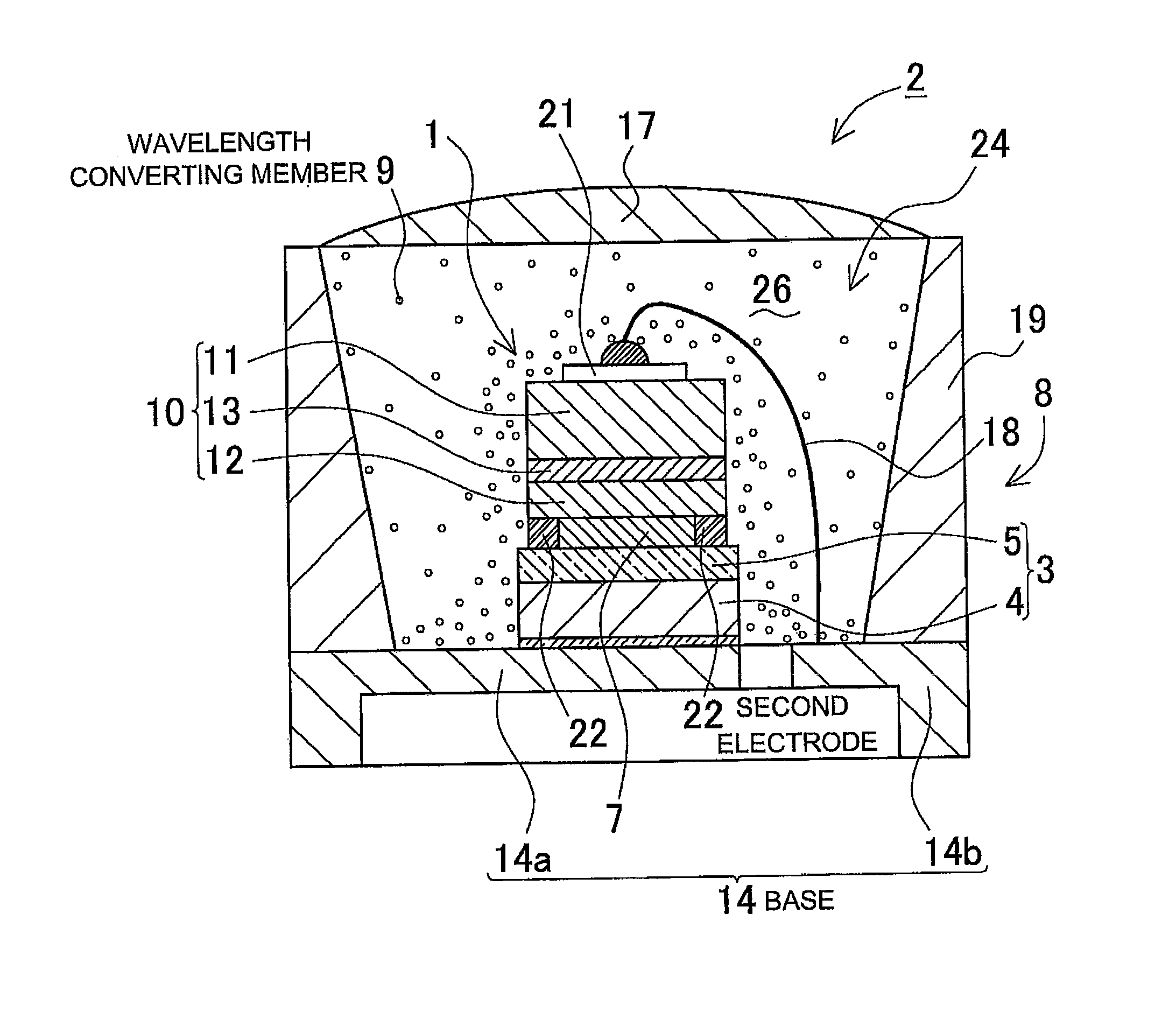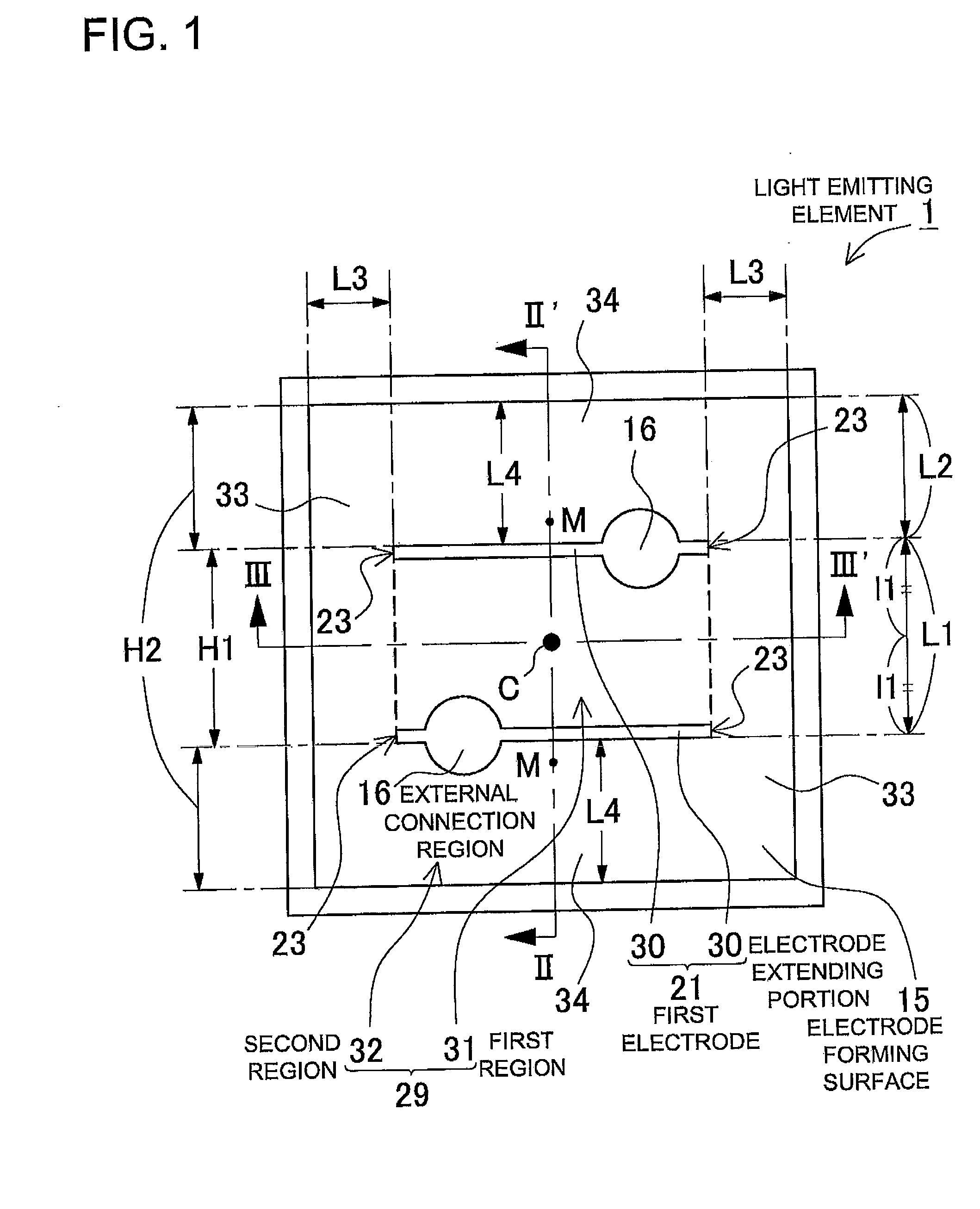Light emitting element and light emitting device using the light emitting element
- Summary
- Abstract
- Description
- Claims
- Application Information
AI Technical Summary
Benefits of technology
Problems solved by technology
Method used
Image
Examples
embodiments
[0042]A plan view shown in FIG. 1 is an example of a light emitting element 1 according to the present embodiment. FIG. 2 is a cross sectional view taken along line II-II′ of FIG. 1, and FIG. 3 is a cross sectional view taken along line III-III′ of FIG. 1, respectively.
[0043]The light emitting element 1 shown in FIG. 2 or FIG. 3 is mainly constructed of a support pedestal 3, a semiconductor structure 10 positioned above the support pedestal 3, an electrode portion 20 interposing upper and lower surfaces of the semiconductor structure 10. Also, the support pedestal 3 is fixed by a support substrate 4 and a bonding layer 5 stacked in this order. The semiconductor structure 10 includes a light emitting layer 13, a n-type semiconductor layer which is a first conductive type layer 11 stacked interposing the light emitting layer 13, and a p-type semiconductor layer which is a second conductive type layer 12. In the example shown in the figures, the p-type semiconductor layer 12, the light...
example 1
[0114]A configuration of an electrode according to Example 1 will be shown below. Herein, members of the same quality as described above are assigned the same reference numerals and detailed description thereof will be omitted. FIG. 10 is a plan view of a light emitting element 101 seen from its light extracting side, and is mainly illustrating an n-electrode 41. The light emitting element 101 shown in FIG. 10 is a dice having an substantially square shape of 1 mm (electrode forming surface of 1 mm×1 mm). The circumferential shape thereof is formed by a first end 35 extending in one direction (the right and left direction in FIG. 10), a second end 36 perpendicular to the first end, and two ends 35′, 36′ positioned respectively opposite to and in parallel with the two ends 35, 36.
[0115]The n-electrode 41 has a pair of electrode pad portions 16 formed in the electrode forming surface 15 which is an exposed portion of the n-type semiconductor layer 11, and an electrode extending porti...
example 2
[0125]A light emitting element having a structure as that of the light emitting element of Example 1 is provided with the electrodes whose shape and arrangement are made in a scaled-down manner. With this light emitting element of 800 μm, good optical output and heat dissipation can be obtained as in Example 1.
PUM
 Login to View More
Login to View More Abstract
Description
Claims
Application Information
 Login to View More
Login to View More - R&D
- Intellectual Property
- Life Sciences
- Materials
- Tech Scout
- Unparalleled Data Quality
- Higher Quality Content
- 60% Fewer Hallucinations
Browse by: Latest US Patents, China's latest patents, Technical Efficacy Thesaurus, Application Domain, Technology Topic, Popular Technical Reports.
© 2025 PatSnap. All rights reserved.Legal|Privacy policy|Modern Slavery Act Transparency Statement|Sitemap|About US| Contact US: help@patsnap.com



